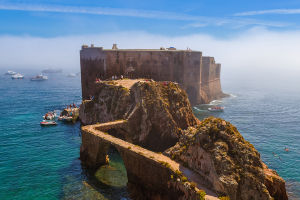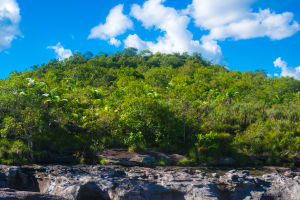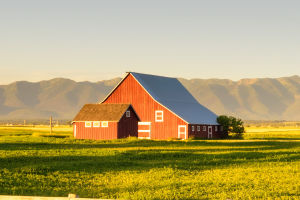Mention the Yarra River and most might picture its final stretch winding through Melbourne’s bustling city center.
However, this iconic river spans 242 kilometers, originating from Mt Baw Baw in the Yarra Ranges National Park in northeastern Melbourne, before flowing into Port Phillip Bay.
Along its journey, the Yarra offers a stunning variety of landscapes, historical insights, and cultural significance.
History of the Yarra River
The Connection with the Wurundjeri People
Dear Lykkers! The Wurundjeri people, the traditional custodians of the land through which the Yarra River flows, have had a deep connection with the river for thousands of years. This river provided not only physical resources, like water and food, but also important cultural and spiritual sites, such as birthplaces, ceremonial grounds, and burial sites.
European Settlements and Disputes
Dear Lykkers, in 1835, the river and its surrounding lands became a point of contention when Tasmanian farmer John Batman claimed to have purchased the land from the Wurundjeri people in exchange for goods. However, the Wurundjeri understood the exchange as a friendship ceremony, allowing Batman to pass through their country.
The Challenges Faced by the Yarra
Melbourne's rapid growth came at a cost, as the Yarra River, once pristine, became one of the dirtiest rivers globally. The lack of sewage systems in early Melbourne meant the Yarra was used for waste disposal, causing the spread of diseases like diphtheria, dysentery, and typhoid.The first recorded flood occurred in 1839, but it was the 1891 flood, with water levels rising 14 meters above normal, that had a devastating impact, destroying 200 houses.
Natural Features of the Yarra River
The Yarra River flows through a vast array of habitats, from protected forested catchments to agricultural lands and urban developments, creating diverse landscapes.
The Upper Yarra
The upper reaches of the Yarra River, including its main tributaries, flow through mountainous and forested areas. These forests have been safeguarded for over a century to maintain the high quality of Melbourne’s drinking water, preserving the natural environment for generations to come.
The Middle and Lower Yarra
As the river travels further, it passes through cleared lands dedicated to agriculture and urban development. This has led to soil erosion, resulting in the muddy, clay-colored appearance of the river. The lower section of the river is an estuary, where saltwater from Port Phillip Bay extends about 10 kilometers upstream.
Victorian Heritage River
The stretch of the Yarra River between Warburton and Warrandyte is designated as a Victorian Heritage River, a recognition of its natural and cultural value to the state. Visitors can appreciate this segment’s preserved landscapes and historical importance.
Plants and Wildlife Along the Yarra River
The Yarra River supports a rich diversity of plants and wildlife, making it a vital ecological corridor in Victoria.
Fish Species
The river offers high-quality habitat for a variety of fish species, though native fish face competition from introduced species.
Birdlife
The Yarra River is home to over 190 bird species, including waterbirds, birds of prey, and songbirds. Iconic species such as the laughing kookaburra and White-faced Heron nest along the riverbanks. Some species, like the Nankeen Night Heron, are considered regionally significant.
Frogs and Mammals
The river and its surrounding wetlands are ideal habitats for frogs, with species such as the eastern froglet and Peron’s tree frog found here.
Reptiles
The river also hosts a range of reptiles, including skinks, snakes, and the Eastern Long-necked turtle, often spotted in the still waters of lakes and billabongs along the river.
Vegetation Communities
More than 25 unique vegetation communities flourish along the Yarra River. Riparian scrub is common, featuring river red gums and dense undergrowth of silver wattles, bottlebrushes, and currant bushes.
Places to Visit Along the Yarra River
In recent decades, Melbourne has transformed its riverfront, making it a popular destination for locals and tourists alike. The Yarra River’s waterfront now boasts a range of cultural and recreational venues.
Main Yarra Trail
The 38-kilometer Main Yarra Trail stretches from Southbank to Melbourne's northeastern suburbs, taking visitors through diverse landscapes, including sporting ovals, market gardens, and river flats.
Birrarung Marr (Melbourne)
This scenic riverfront park in the heart of Melbourne is home to major events and festivals, such as the Moomba Waterfest, held each March.
Domain Parklands (Melbourne)
Located on the south bank of the river, Domain Parklands spans 123 hectares and features iconic sites such as the Royal Botanic Gardens, the Shrine of Remembrance, and the Sidney Myer Music Bowl.
Yarra Bend Park (Fairfield)
Known for its large natural bushland, Yarra Bend Park attracts over 1.5 million visitors annually. Key attractions include open woodlands, formal parklands, historic boathouses, and trails, with Dights Falls being one of the most notable features.
Protecting the Yarra River
The Yarra River has seen significant improvements since the 1970s, thanks to the expansion of Melbourne’s sewerage system. Despite these improvements, the river still faces challenges.
Water Quality
While the upper reaches of the Yarra maintain good water quality, pollution from agriculture, urban development, and stormwater runoff affects the water quality downstream.
Habitat Preservation
Habitat loss has slowed in recent years due to efforts like revegetation and the removal of fish migration barriers. Some species, such as the platypus, have even been rediscovered in areas where they were once thought to be extinct.


